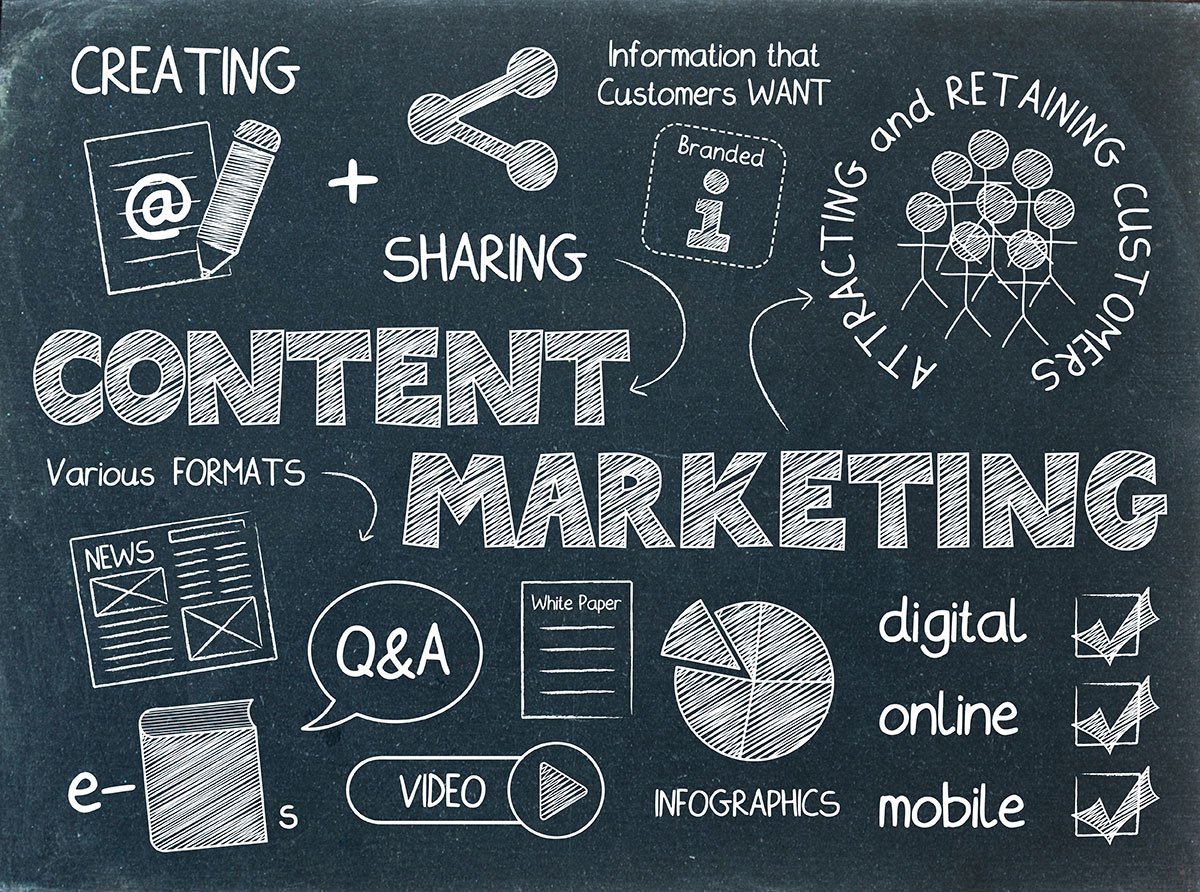Google Injured Yahoo! Directories And Web 2.0 Delivered A Death Blow To Push Marketing
For 90% of the Buyer Journey, buyers drive the sales cycle with Internet search, 95% of the time (whether B2B or B2C). But businesses ignore this reality, even if it means they’re marketing to customers in ways they, themselves, dislike.

Most marketing today is interrupting people to talk about ourselves, and asking to take from them, later. Companies often forget the Golden Rule: do unto others. They market in ways they themselves don’t like or even respond well to. It’s pretty crazy, and, thankfully, it’s dying off.
What’s replacing it is ‘inbound’ or ‘content’ or ‘pull’ marketing. What are these? They’re giving to receive; offering rather than asking; not conflating you talking about yourself as ‘content’
They’re giving upfront, freely, generously, with no strings, and without the expectation of receiving, later.
They’re providing well-made, objective-value, content, that helps people – whether they choose to buy from your company or not.
It’s helping people. That’s it. Answering their questions, bothering to let them into your culture; sharing your expertise.
And it tends to ‘pull’ search traffic to you, build trust, and distinguish you. It’s 9x as cost-effective as other (paid) modes of marketing, and establishes you as a ‘thought leader’.
We like to call ‘content marketing’ ‘buyer-centric‘ or ‘permission‘ or ‘pull‘ marketing, as an alternative to ‘paid’, or ‘seller-centric‘ or ‘interruption‘ or ‘push’ marketing.
We’re all self-interested; where the interest of the seller intersects with the interest of the buyer, the buyer’s interest will always prevail. So, content marketing is creating the content buyers seek when on their Buyer Journey – and giving that away to help them.
Consider this illustration:
You’ve stopped at a grocery store on your way home from work. You’re in a bustling produce section, trying to remember if you’re out of romaine lettuce. You’ve had a long day, but you’re not tired, per se. You’re relieved to be out of work and bracing yourself for the checkout line. You’re looking forward to your time and enjoying a nice dinner.
All of the sudden, apropos of nothing, I approach you, with something in my hand. Before you can ask what it’s about, I enthusiastically hand you a brochure about how awesome I am.
It sounds psychotic, in this context, for me to have done this, to expect a positive response, but this is exactly how most marketing happens. With or without a signal (search, traffic or behavioral gesture) of interest, ads are literally foisted on us all day long.
If I did this to you in person, you would not respond well. Yet the gesture and associated feelings are the same in real life. It’s no less unwelcome.
In any case, you would not read what I gave you, and would not buy whatever it was that I was selling, even if you were in the market for it.
The only real difference between this colorful example and how most marketing happens is that companies are paying Google, or Facebook, or AdRoll, or DoubleClick, or Salesforce, or SendInBlue to interrupt people, to talk about themselves, and hope to take money from them later.
The reason why response rates for ads and brochures are abysmal should be self-evident: they aren’t wanted.
Actually, a more accurate analogy would be a cluster of salespeople and marketers interrupting you as you drive, at the entrance, in the produce section, in the bathroom on your phone…
It’s out of control and technology has really only made it worse.

Suppose, on the other hand, you wake up one Saturday morning, hung-over. The night before, a friend arrived from out of town and you ‘went hard in the paint’, on a wine bar or pub crawl, getting lost in good conversation and catching up. Today, you’re not feeling so hot.
You roll out of bed and shuffle to the curb to pick up your paper, the daylight burns like you’re a vampire, and you just want relief.
You wipe your eyes, and you see me standing outside at the foot of your stairs, smartly dressed, with a pressed shirt and tie, holding stadium tray.
On the tray are orange juice, a coffee carafe, activated charcoal, electrolytes, mineral water, and acetaminophen. I have a hot box near my feet.
Content works because it’s a universal truism that people are self-interested, and it’s easier to offer than it is to ask. We’re witnessing the bizarre insistence of marketers continuing to ask despite low click-through rates, because at scale it sort of works. Sort of.
“Can I offer you a cure for your condition?”, I say.
“Um, sure.” you reply. “What’s in the hot box?”
“Burritos.”, I reply, as I squat to open the container and produce one.
You’re taken aback by the amazing timeliness and value of my offer. How did I know? you think to yourself. You’re actually beside yourself at this seemingly clairvoyant generosity. It’s just so helpful.
You decide you can trust me, as you take the burrito, partly out of desperation. You pop the Tylenol and quaff the electrolytes and mineral water, immediately feeling better. You help yourself to the coffee as you unwrap the burrito. It’s the most timely cure you’ve had in ages. Maybe ever.
You bite into the burrito, losing yourself for a moment. “Uh, what do I owe you?”, as you stand sheepishly.
“Nothing.”, I reply. “Here’s my card. Remember me next time you’ve got a hang-over.” And with that, I disappear.
Damn skippy you’ll call me next time you’ve got a hang-over. You’ll tell 100 people about this experience, and remember it for 20 years, maybe until you die.
My card will go on your refrigerator. If you encounter me or my brand, helping in other ways with no ask, you’ll already trust me and be interested – even if you’re not in the market for what we’re offering.
If I make additional unconditional, high-value, useful, relevant offers to you, you’ll become an evangelist for me, a superfan.
The cost of giving value, upfront, with no strings, is far outweighed by the returns. This is how content marketing works.
We grant, you can’t give out hangover cures on the Internet, but you can be helpful, and selfless, and timely. The only limit to how helpful you can be is your own imagination and level of effort.
You can be the company helping people instead of selling them. You can pull them with content instead of pushing unwanted content in front of them.
The second example, of curing your hangover, and asking for nothing, embodies the spirit of Inbound or Content marketing. It’s giving to receive. It’s being helpful instead of looking at how a company can take from people. It’s providing objective value, upfront, without an ‘ask’.
The rules for marketing have changed. Consumers have changed. They have no time, no attention to spare. They don’t want to see your ads or hear you talk about yourself and your needs.
Content marketing works because it’s a universal truism that it’s easier to offer than it is to ask – for everybody involved. We’re watching a bizarre ritual of people asking with such low success rates because it’s actually a depersonalized or automated ‘ask’; the interruption comes in the form of an unwanted ad.
It’s time marketing grew up and followed the Golden Rule.





